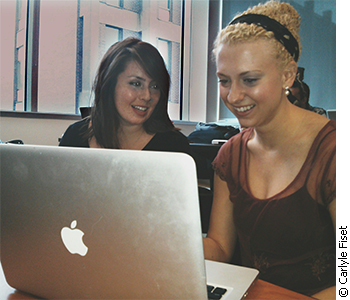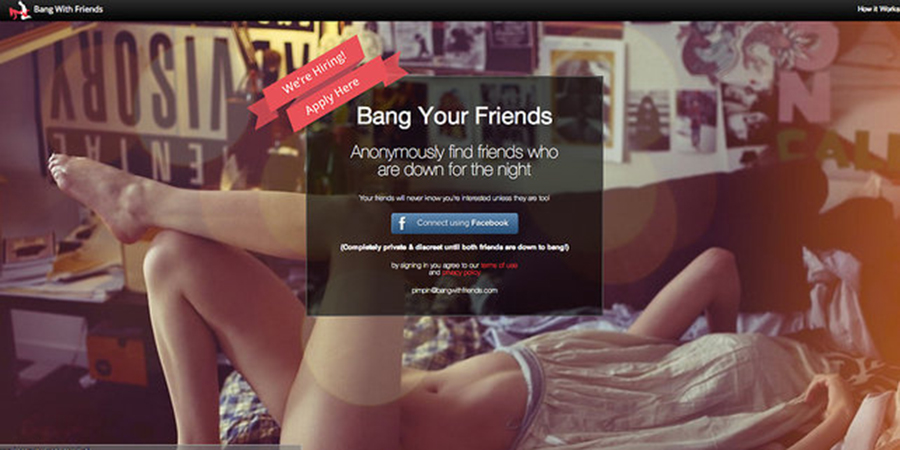Tags
Related Posts
Share This
Getting ‘Down’: The rise of social sex apps
By Carlyle Fiset
The internet once asked Homer Simpson, “Are you trying to meet someone special, but are tired of the bar scene?” He famously responded, “No, I will never tire of the bar scene!” The adage may have rung true in 2004, when that Season 16 episode of The Simpsons aired. That was a time when dating sites were still battling to break through the stigma attached to couples meeting online. Things have changed since then.
It’s starting to look like people, particularly millennials, are tired of the traditional online dating scene. Dominant websites like Match.com and eHarmony still enjoy strong numbers amongst older singles, but crowds between the ages of 18 and 30 have embraced new dating apps that some refer to as “social sex apps.” Grindr was the first app to appear under that description in March 2009. It was catered exclusively to gay, bi-sexual and bi-curious men who were looking for casual sexual relations. It took some time for the concept of hookup apps to catch on with a heterosexual audience. However, that barrier has been shattered in the last year.
One young woman estimates that close to 80 percent of her friends use Tinder.
A handful of apps are enjoying huge download rates in the heterosexual market. Tinder is the most popular one by far. The app works by securing a user’s personal information, such as name, age, sexual orientation and photos through Facebook. It relies on the Facebook verification process to prevent fraudulent accounts. After creating a profile, users are linked to other Tinderers who are geographically close to them. They anonymously swipe through a stream of photos, picking out ones they like. Users have the option to select if they are interested in matches with other male or female users, or both. If two users like each other, the app notifies both parties, informing them they’ve received a new “match.” It then connects them through a chat window.
Tinder became available in Apple’s App Store in September 2012, and later Google’s Play Store. Its popularity grew quickly, as demonstrated by the number of downloads and active users. As of August 2013, Tinder users had swiped over 13 billion times worldwide, according to Bloomberg Businessweek. There were three billion swipes in August alone, and two million matches.
Users love the convenience
The specific design of the app is tailored exclusively for a smartphone. This makes Tinder hugely popular with the millennial generation, says Sonia Nagra, who is completing an honour’s degree in youth sexuality at York University. The app isn’t something that requires a lot of attention or effort, adding to its popular convenience, she says.

Starting a fire? Tinder’s casual and social qualities have made it a huge hit with the millennial generation.
The use of the app can vary from user to user. For the most part, users are just looking to interact with strangers whom they have not, and may never, meet in person, says Ashley Jones, 21, who has used the app for about eight months and agreed to speak under a pseudonym. She usually uses it when she is bored, as something amusing to occupy her time: “Sometimes there’s just a guy you think would be funny to talk to.”
Oftentimes Jones has been subjected to the noble art of “pickup lines.” Whether they’re creepy or hilarious, she says, “I’ve heard every pickup line in the book on Tinder, from ‘Hey, see this shirt I’m wearing? It’s 100 percent boyfriend material,’ to ‘Hey, looking to hookup. You interested?’”
Her approach to using Tinder is one that remains distant for the most part. She would consider meeting a match in person only if she recognized him or if they shared several mutual Facebook friends (the number of which the app notifies you of). She says those instances, however, are extremely rare. “Tinder’s just a game and big ego boost for me. I’m trying to get the most matches with attractive guys as possible.”
She says other people can take it more seriously, though. Jones estimates that close to 80 percent of her friends use Tinder, and everyone has something different to gain from it. While she may not be looking to start a relationship through the app, she knows people who have. A friend of hers met her current boyfriend through Tinder. They had originally matched and met just for sex, but it became recurring and eventually they started dating. As far as Jones is aware, she says the relationship is as strong as one that started off the Internet.
Why don’t we just get Down?
Tinder isn’t explicitly marketed as an app that promotes sexual activity amongst its users. In its iTunes description, it claims to “find out who likes you nearby, and connect you with them if you’re interested. It’s the new way to meet people around you.” Promising something more is where Bang With Friends came into the picture.
‘We want people to find happiness, and sex is crucial to finding happiness’ — Down CEO Colin Hodge
The founders of Bang With Friends wanted to skip the ambiguity of Tinder and get to the point, according to CEO and co-founder Colin Hodge in an October 2013 interview with Business Insider. “We want people to find happiness, and sex is a crucial part to finding happiness in healthy relationships,” he says.
The COO of the company, Saul Spady, is even more open about the purpose of the app. “It’s the perfect setup for the millennial generation,” he said in an April 2013 interview with Tech Hustlers: “[Millennials] don’t have time to date and this allows users to go online and select the friends they want to bang.”

Bang With Friends was forced to rebrand their entire company to get back into the App Store. They relaunched in October 2013 as “Down”.
The candour of Bang With Friends reflected the imagined purpose of the app, and it led to some pushback from Apple itself. After launching the app in January 2013, Apple had removed Bang With Friends from its App Store within just a few months because the company didn’t like the app’s “content,” according to Hodge. This led to a three-month struggle and an entire rebranding of the company, to bring Bang With Friends up to Apple standards.
In October 2013, the company re-launched the app for Apple and Google markets under its current title, Down — as in “get down with your friends,” says Hodge. The slightly tamer approach has seemed to satisfy Apple. Down is still available at both app stores and has been downloaded well over a million times, according to Matt Slusarenko, a spokesperson for the brand.
Rather than connect you with strangers, Down allows you to select Facebook friends, and friends of friends whom you are interested in. Over 30 million friends have been selected to get “down” with, says Slusarenko. Users generally check in monthly, with increasing successful matches.
Yet users of Down and Tinder are vulnerable to a spectrum of repercussions, researcher Nagra warns. The anonymity of the process can remove the identity of people who meet through social sex apps, she says: “People begin to look at another user not as a person but as a body.”
This cautious outlook is similar to Jones’s use of the app. Each new swipe is a potential notch on her “attractive guy” tally, but she has never pursued anything more serious through the app because she likens Tinder too closely to online dating, which for her is a last resort.
Research surrounding the apps is limited, however. A wide variety of university professors in the fields of sexuality, psychology and social media declined to comment because they felt it was outside their area of expertise, or there was little academic opinion on the subject.
Meanwhile, twenty-somethings are still swiping through Tinder matches and “getting Down” with their friends. A generation that thrives on convenience has spoken loud and clear against the mantra of Homer Simpson. They are tired of the bar scene, and the alternative is just so simple.
Home-page photo © Carlyle Fiset.





